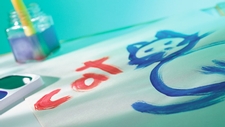Pictures, Numbers, and Words

TEKS Objective
The student is expected to record and organize data using pictures, numbers, and words.
Essential Understanding
The student develops abilities to ask questions and seek answers in classroom and outdoor investigations.
Science Background
It’s Time for More Early Childhood Science: National Science Teachers Association (website) - Article that explains why primary students are at the perfect age to begin “discovering” science.
It’s Time for More Early Childhood Science
National Science Teachers Association, www.nsta.org
What is Inquiry Science Teaching? BioEd Online (video) - Strategies for using questions and investigations to guide your students’ science learning.
What is Inquiry Science Teaching?
BioEd Online, www.bioedonline.org
Categorical Data Collection: Math Solutions (PDF) - This article details data collection and graphing techniques appropriate for 1st and 2nd graders. It also describes ways to assess students’ their ability to analyze graphs and charts.
Categorical Data Collection
Math Solutions, www.mathsolutions.com
Signature Lesson
Graphing the Week’s Temperature: Learn NC (website) - Students collect and record local temperature data for one week, and then use Graph Club software to create a graph to organize information. (If you do not have Graph Club software, create a hard copy graph sheet template and provide students with strips of construction paper in various colors to make their graphs.)
- Supporting Lessons
- Extensions
- Assessment Ideas
- Literature Connections
- Related
TEKS - Additional Resources
Supporting Lessons
Needs of Plants: BioEd Online (website) - This simple activity teaches the scientific method, and illustrates the needs of plants for survival and growth. Students observe four treatment groups of radish plants and record their observations in a table over the course of 16 days.
Elaboration Lessons and Extensions
A Magnet Project Makes a Great Science Fair Idea! Easy Science Fair Projects (website) - Assess students’ skill with collecting data and making observations as they test various objects to determine if those items are attracted to magnets.
Assessment Ideas
Give each student a plastic bag containing 15 bear counters of various colors. Have each student sort the bears into different color groups and create a numerical graph showing how many bears of each color are in his/her bag. Then, have students create a second graph using pictures instead of numbers.
Literature Connections
What’s Going On? Collecting and Recording Your Data. Burns, Kylie (ISBN-13: 978-0778751700)
The Great Graph Contest. Leedy Loreen (ISBN-13: 978-0823420292)
Mashed Potatoes: Collecting and Reporting Data. Harris, Nancy (ISBN-13: 978-1600446405)
Additional Resources
Make a Living Graph: Houghton Mifflin Company (website) - Learn about bar graphs and create one to graphically represent the favorite foods of students in the class.
Make a Living Graph
Houghton Mifflin Company, www.eduplace.com
Data Collection in Early Childhood: National Science Teachers Association (website) - Data collection is an important part of science inquiry. Here are some examples of data collection methods for science investigations by young children.
Data Collection in Early Childhood
National Science Teachers Association, nstacommunities.org
TEKS Navigation
Grade 1
Need Assistance?
If you need help or have a question please use the links below to help resolve your problem.

Comments